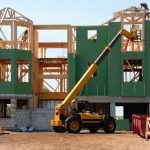
A well-maintained fence enhances the aesthetic appeal of your property and ensures privacy and security. However, even the sturdiest fences can show signs of wear and tear over time. Recognizing early signs that your fence needs repairs is crucial to prevent further damage and costly replacements. Common indicators include visible rot, leaning or sagging sections, damaged or missing boards, and loose or rusted hardware.
Regular inspections are essential for detecting issues early and preventing minor problems from becoming major repairs. Here’s a more detailed look at the common signs that your fence may need attention:
1. Visible Damage or Deterioration
Visible damage is one of the most apparent indicators that your fence needs repairs. On wooden fences, check for cracked, splintered, or rotting boards. These issues can compromise the fence’s structural integrity and ability to secure your property. Metal fences, such as chain-link or wrought iron, may show signs of rust, corrosion, or bent sections.
Due to exposure to the elements, vinyl fences can develop cracks or warp. If you notice any of these issues, it’s wise to consult a fence company in Bixby to assess the damage and provide necessary repairs. Addressing these visible signs promptly can help prevent further damage and maintain the fence’s effectiveness.
2. Loose or Missing Boards
Loose or missing boards can create gaps in your fence, reducing its ability to keep intruders out and protect your pets and children. For wooden fences, check each board to ensure it is securely attached. Metal and vinyl fences may have panels that are out of place or missing, which can compromise the fence’s security. Regularly tightening loose boards or replacing missing ones helps maintain the fence’s strength and functionality.
3. Sagging or Leaning Sections
Sagging or leaning sections of a fence often indicate problems with the fence’s foundation or posts. This can be caused by damaged or decayed posts, poor installation, or shifting soil. Sagging sections affect the fence’s appearance, security, and effectiveness. Reinforcing or replacing the affected posts and addressing soil erosion or drainage issues can restore the fence’s stability and functionality.
4. Rust or Corrosion
Metal fences, such as chain-link, wrought iron, or aluminum, are susceptible to rust and corrosion. Rust can weaken the metal and cause it to deteriorate, leading to structural failures. Look for signs of rust, such as reddish-brown discoloration or flaky spots. Treating rust with rust-resistant paint or coatings can help prevent further corrosion and extend the life of your metal fence.
5. Gaps at the Base
Gaps or spaces at the base of the fence can indicate shifting soil, erosion, or problems with the fence’s foundation. These gaps can allow pets or wildlife to slip through, affecting the fence’s stability. Companies like Sperry Fence Company emphasize the importance of inspecting the base of the fence and reinforcing or filling any gaps to maintain its effectiveness and prevent instability-related issues. By addressing these problems promptly, you can ensure the longevity and reliability of your fence.
6. Difficulty Opening or Closing Gates
If your fence includes a gate, difficulty opening or closing may signal problems with the gate’s hinges, latch, or alignment. Over time, gates can become misaligned or experience wear and tear on the moving parts. Ensuring the gate operates smoothly and making necessary adjustments or repairs helps maintain its functionality and security.
7. Signs of Pest Infestation
Wooden fences are particularly vulnerable to pest infestations, such as termites, carpenter ants, or other wood-damaging insects. Look for signs of pest activity, such as holes, tunnels, or sawdust around the fence. Pest infestations can lead to significant damage if not addressed promptly. Treating or replacing affected fence sections can prevent further damage and protect the fence’s structural integrity.
8. Erosion Around Fence Posts
Erosion around the base of fence posts can undermine stability, leading to leaning or collapsing fence sections. Erosion can be caused by heavy rainfall, poor drainage, or improper installation. Addressing erosion issues by reinforcing the posts, improving drainage, or filling in eroded areas helps maintain the fence’s stability and effectiveness.
9. Chipping or Peeling Paint
Chipping or peeling paint can indicate that the protective coating fails for painted fences. This exposes the underlying material to the elements, leading to further deterioration. Repainting or refinishing the fence can help protect it from weather-related damage and maintain its appearance.
10. General Wear and Tear
Even without specific issues, general wear and tear from everyday use and exposure to the elements can impact the condition of your fence. Regular inspections help identify minor problems before they escalate into major repairs. Addressing these issues early ensures that your fence remains in good condition and continues to perform its essential functions. For more detailed guidance on maintenance and repair, you might find valuable information at this link here, which provides expert advice and tips tailored to keeping your fence in top shape.
11. Uneven or Discolored Staining
For wooden fences that have been stained or treated, uneven or discolored staining can indicate underlying issues. Uneven staining may occur due to varying exposure to the sun and rain, which can cause certain fence sections to age faster than others. Discoloration can also indicate that the wood is beginning to rot or that the stain is no longer effectively protecting the wood.
Addressing these issues by re-staining or treating the fence helps maintain its appearance and protects it from weather-related damage.
12. Loose or Broken Fence Posts
Fence posts are the backbone of your fence, providing support and stability. If you notice that the posts are loose or broken, it can compromise the entire structure of the fence. Loose posts can cause fence sections to wobble or shift, while broken posts can lead to leaning or collapsing fence parts. Regularly checking the stability of the posts and repairing or replacing any damaged ones ensures that the fence remains secure and effective.
Final Thoughts
Recognizing and addressing these common signs of fence damage can help you maintain a secure, functional, and aesthetically pleasing boundary around your property. By conducting regular inspections and making timely repairs, you can prevent small issues from becoming significant problems, ensuring that your fence continues to provide the security, privacy, and curb appeal your home needs.























































